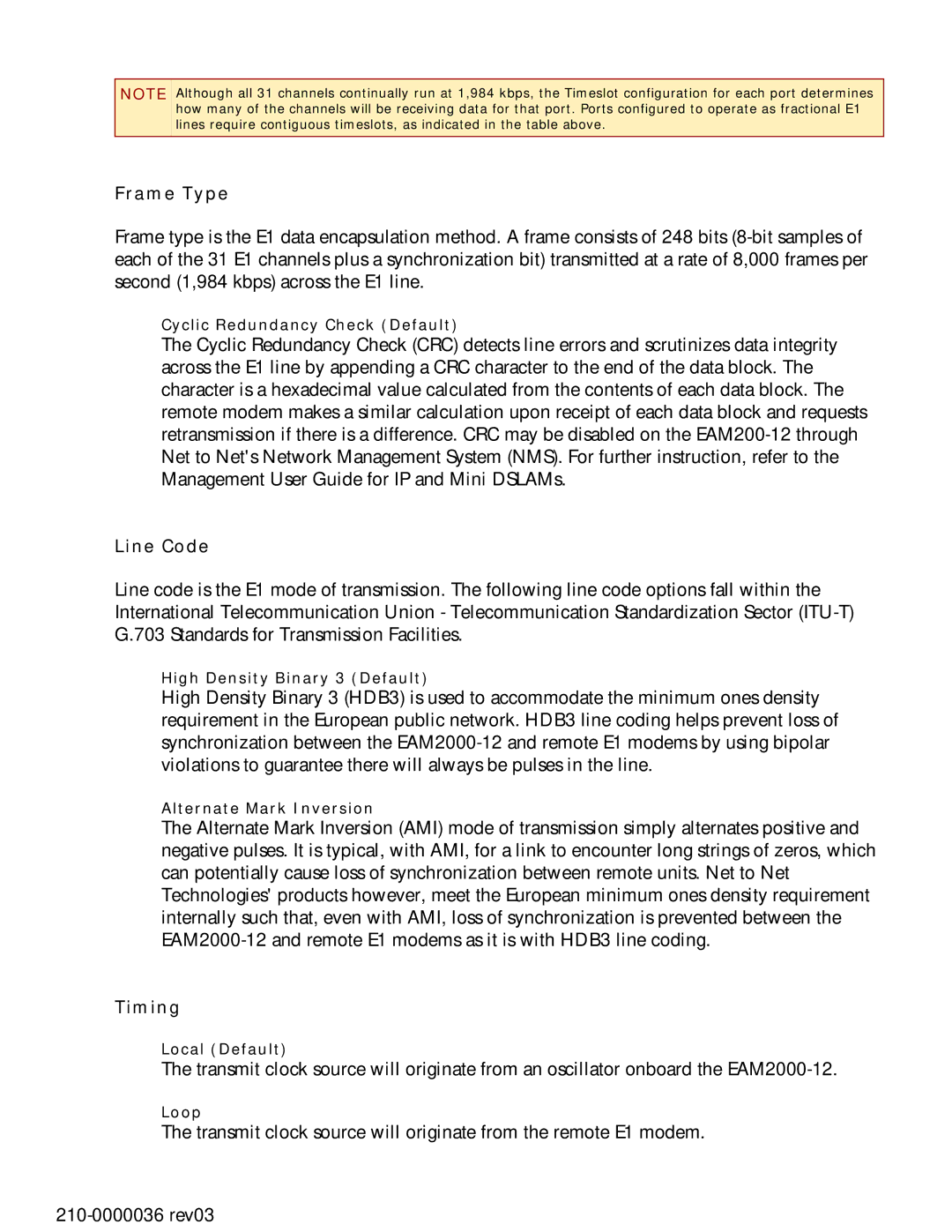
NOTE Although all 31 channels continually run at 1,984 kbps, the Timeslot configuration for each port determines how many of the channels will be receiving data for that port. Ports configured to operate as fractional E1 lines require contiguous timeslots, as indicated in the table above.
Frame Type
Frame type is the E1 data encapsulation method. A frame consists of 248 bits
Cyclic Redundancy Check (Default)
The Cyclic Redundancy Check (CRC) detects line errors and scrutinizes data integrity across the E1 line by appending a CRC character to the end of the data block. The character is a hexadecimal value calculated from the contents of each data block. The remote modem makes a similar calculation upon receipt of each data block and requests retransmission if there is a difference. CRC may be disabled on the
Line Code
Line code is the E1 mode of transmission. The following line code options fall within the International Telecommunication Union - Telecommunication Standardization Sector
High Density Binary 3 (Default)
High Density Binary 3 (HDB3) is used to accommodate the minimum ones density requirement in the European public network. HDB3 line coding helps prevent loss of synchronization between the
Alternate Mark Inversion
The Alternate Mark Inversion (AMI) mode of transmission simply alternates positive and negative pulses. It is typical, with AMI, for a link to encounter long strings of zeros, which can potentially cause loss of synchronization between remote units. Net to Net Technologies' products however, meet the European minimum ones density requirement internally such that, even with AMI, loss of synchronization is prevented between the
Timing
Local (Default)
The transmit clock source will originate from an oscillator onboard the
Loop
The transmit clock source will originate from the remote E1 modem.
